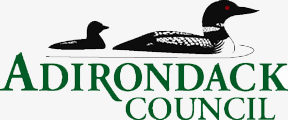
Adirondack Council Calls on Legislature to Protect Water by Restoring the Environmental Protection Fund to $200 million

ADIRONDACK COUNCIL CALLS ON LEGISLATURE TO PROTECT WATER
BY RESTORING THE ENVIRONMENTAL PROTECTION FUND TO $200 MILLION
Council Also Provides Handbook to Local Governments on How to Safeguard Local Supplies
For more information:
John F. Sheehan
518-432-1770 (ofc)
518-441-1340 (cell)
FOR IMMEDIATE RELEASE, Friday, March 7, 2014
ELIZABETHTOWN, N.Y. – The Adirondack Park’s largest environmental organization today reminded the NYS Legislature that a stronger commitment to the NYS Environmental Protection Fund (EPF) is needed to protect the massive quantities of fresh water flowing from the Adirondack Park into the rest of the state.
The Adirondack Council and other advocates for environmental protection, green jobs and community improvement are calling on the Governor and Legislature to restore the EPF to $200 million. As an illustration of what is at stake, the Council distributed a copy of its highly regarded publication Adirondack Waters: Resource at Risk to all 212 members of the Legislature, along with a note summarizing threats to the Park’s water supplies.
“The Adirondack Park’s Hudson River watershed alone sends more than 300-billion gallons of clean water per day to the communities of the Hudson Valley and the world’s most biologically productive river estuary, but that is only a fraction of the water that the Park provides to the rest of the Northeast,” said Adirondack Council Executive Director William C. Janeway. “The Hudson watershed covers only one-third of the Adirondack Park. Much more water flows from here in all directions by way of our rivers including Black, Beaver, Moose, St. Regis, Deer, Oswegatchie, Raquette, Grasse, Salmon, Ausable and Boquet rivers, among others.
“The sheer volume of water that comes from this park is amazing,” he explained. “In all, the waters of the Adirondacks include 2,800 lakes and ponds, 1,500 miles of rivers and an estimated 30,000 miles of brooks and streams.
“Air pollution and ever-increasing development take their toll, as do aging septic systems, road salt use, global climate change, water diversions, invasive species, and other threats,” Janeway noted in his letter to Legislators. “Each threat can be reduced or eliminated when we work together and take action, as citizens, government and organizations like the Adirondack Council.”
Most of the actions required to protect water require state funding, he noted. The EPF is the major source of that funding for the state.
One of the report’s central themes is that there is no such thing as new water. All of the water this planet has, and will ever have, is already here, cycling from the earth’s surface (and just below) to the atmosphere and back. The more we contaminate, the less we have to sustain all life on earth. Overall, it is much cheaper to protect the sources of our pure water than to try to clean it up after it is contaminated.
The Adirondack Council is committed to collaborating with individuals and organizations who share our commitment to protecting and improving your Park’s and your state’s waters. Together as partners, and with other stakeholders, we can educate citizens and policymakers in New York State about what we can all do, now and in the future, to preserve this precious resource.
“We are disappointed that, in a time of budget surplus, there appears to be a decrease in total environmental and clean water infrastructure funding even after taking into account a modest and much appreciated partial restoration of the Environmental Protect Fund (EPF), New York Works capital funding, and other investments,” Janeway said. “That modest EPF restoration from $153 to $157 was approved last year and still leaves the EPF far below the 2009 level of $250 million. We know New York can do better. We are confident that clean water, open space, parks, green jobs and the Adirondacks are a priority for the Governor and Legislature.”
“The Environmental Protection Fund was cut when times were tough, and when revenues from the Real Estate Transfer Tax were dropping,” Janeway said. That revenue is the primary source of funding for the EPF, and is also used to pay bond holders from the 1996 Clean Water/Clean Air Bond Act.
“But the Real Estate Transfer Tax revenue is booming again and will soon top $1 billion,” he said. “It is time to reinvest in the EPF.”
The Council is one of more than 100 organizations that are members of the Friends of New York’s Environment Coalition, which is urging state lawmakers to boost the EPF to $200 million when it negotiates a final budget by the April 1 deadlinThe Adirondack Council is privately funded, not-for-profit organization whose mission is to ensure the ecological integrity and wild character of New York’s six-million-acre Adirondack Park. The Council envisions an Adirondack Park comprised of core wilderness areas, surrounded by working forests and farms, and vibrant rural communities. The Council carries out its mission and vision through research, education, advocacy and legal action. Adirondack Council members live in all 50 United States.




